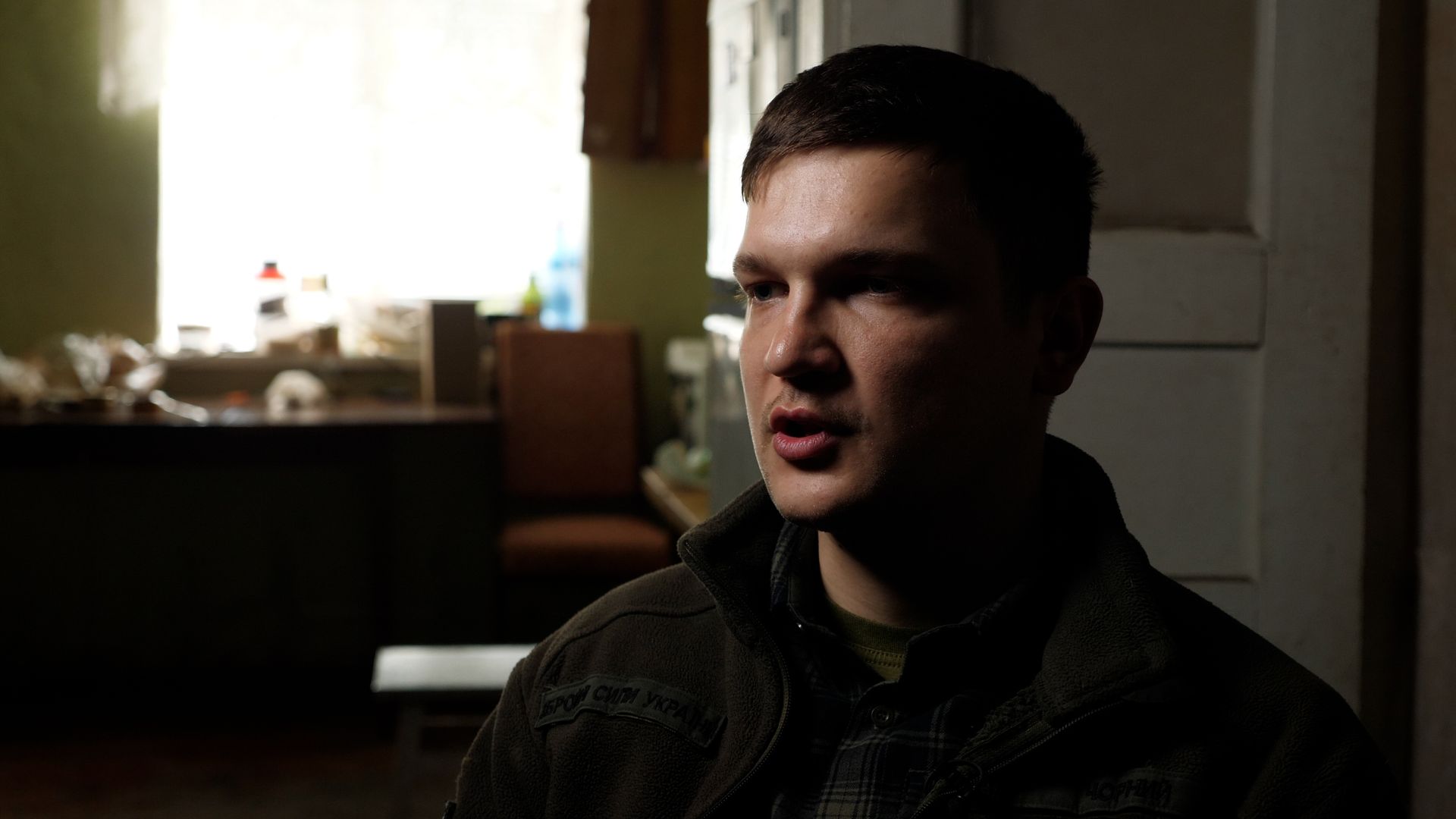Members of a Ukrainian brigade have described how they were secretly relocated to help defend a section of the country’s border with Russia a few days before a new invasion began.
The commander of an artillery unit from 57 Brigade said his guns were even firing at Russian troops who were “brazenly” amassing on the Russian side of the border some 24 hours prior to the incursion into the northeastern region of Kharkiv, which began on 10 May.
“We were hitting tanks on the border… it was already a real war,” said Sasha, 26, who uses the callsign “black”.
The commander of a second artillery unit similarly confirmed the brigade had been moved early to bolster defences in this direction.
The troops had previously been defending the city of Kupiansk, also in Kharkiv.
The comments offer a sense of how Ukraine attempted – ahead of time – to scramble forces to counter a Russian build-up along its long, northeastern border.
But the move was nowhere near enough to prevent the largest assault into Ukraine since Russia launched its full-scale invasion almost two and a half years ago.
Read more: Inside Ukraine’s new northern frontline
A Ukrainian source, describing the first few days of the Kharkiv offensive just over a week ago, said there had been moments when he feared “we had lost the frontline”.
The source said the situation had since stabilised but warned: “We don’t know how long it could be like this”.
Sky News on Saturday tried to visit an artillery position, manned by soldiers from 57 Brigade, just outside the town of Vovchansk – a key target of the Russian offensive.
As we approached at speed by road, a soldier travelling with us said we had to pull over because he needed to communicate via radio with troops on the gunline.
Suddenly a voice over the radio could be heard saying: “Don’t come here. Don’t come at all.”
We were told it was too dangerous to travel further and we had to leave. It was not immediately clear what was happening on the ground.
At a makeshift base, safely back from the frontline, the artillery unit commander Sasha uses electronic maps on a tablet and laptop to confirm targets for his guns to attack.
Read more:
Ukraine war latest: Kremlin forces take control of village
Putin thanks Xi for efforts to resolve Ukraine conflict
Ukraine’s second city hit by drones
He said he and his team relocated from the Kupiansk front on the 4 to 5 May.
“We were indeed moved here earlier,” Sasha said. But he signalled he would have liked longer to prepare.
“I don’t know all the situation and why it happened like this. But I know for sure that to better repel [an attack], we might need either more time or better-prepared positions,” he said.
“Ahead of the assault, we were already hitting targets on Russian territory because we knew they were gathering there. They were brazenly assembling.”
Sasha described the moment the Russians started to advance.
He said it began with three hours of artillery fire against Ukrainian targets before ground troops crossed the border.
“I would love that they [the Russians] had been stopped at the border,” he said.
Instead, a fierce battle erupted, as Russian infantry, backed by airstrikes, drone attacks and artillery fire, pushed forward.
“For the first few days, they [the Russians] were storming our positions – columns of 30 to 50 soldiers. We were hitting them.”
In the chaos, Sasha said he worked to gather information to ensure his troops were able to operate.
“I am proud that my guys managed to do their best,” he said. “All credit to those who stayed on their artillery positions.”
He described the frontline as initially being “fragile” but said reinforcements were now in place. The commander said Russia had lost the opportunity to make a significant breakthrough.
“Until now they had a chance. Even in my area, I knew where we had gaps where they could have slipped through. Now we don’t have such gaps,” he said.
“I am satisfied that we have managed to stabilise the situation.”
At a second artillery position, on a different section of a frontline that has expanded by some 40 miles in the wake of the new attack, a Soviet-era gun, hidden under netting and tree branches, points in the direction of Russia.
Soldiers here said they would be able to inflict a lot more damage on the invaders if they had more ammunition and better weapons.
Nicknamed “grandma”, their D-20 Howitzer artillery piece, which fires 152mm shells, was built in the 1970s.
Be the first to get Breaking News
Install the Sky News app for free
Keep up with all the latest news from the UK and around the world by following Sky News
“We’re saving our artillery shells right now. We fire one, they fire back five,” said one of the servicemen, who – at 50 years old – has the callsign “Grandpa”.
A second soldier said Russia has more weapons than his side.
Asked what difference additional munitions would make, he said with a laugh: “It would increase the number of dead Russians – 100%”.
Additional reporting by Azad Safarov, Ukraine producer




